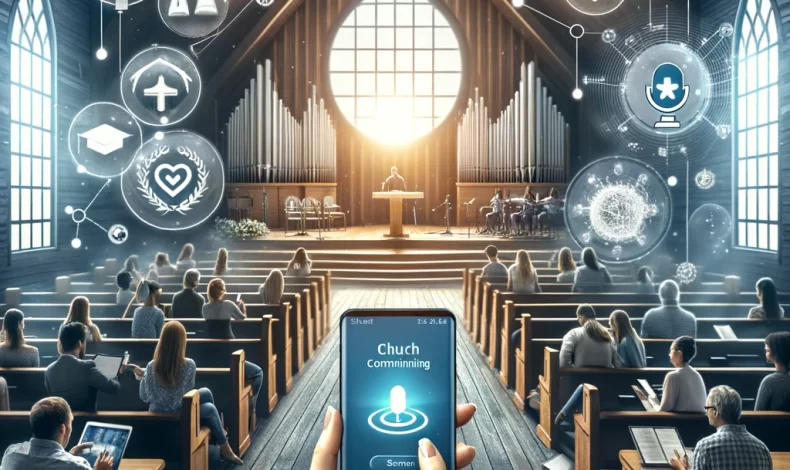Creative Approaches to Church Growth
The art of church building encompasses both creative and practical approaches to church growth. In order to effectively reach and engage with the community, churches must think outside the box and find innovative ways to connect with people. This article will explore some creative approaches that churches can take to foster growth and build a strong foundation for their congregation.
One creative approach to church growth is through the use of technology. In today’s digital age, it is essential for churches to have a strong online presence. This can include creating a user-friendly website that provides information about the church’s mission, values, and upcoming events. Additionally, churches can utilize social media platforms to engage with the community and share inspirational content. By embracing technology, churches can reach a wider audience and connect with individuals who may not have otherwise been exposed to their message.
Another creative approach to church growth is through the use of art and creativity. Churches can create visually appealing spaces that inspire worship and reflection. This can include incorporating artwork, sculptures, and stained glass windows into the church’s design. By creating a visually stimulating environment, churches can enhance the worship experience and create a sense of awe and reverence.
In addition to incorporating art into the physical space, churches can also utilize creative methods of storytelling. This can include using drama, music, and multimedia presentations to convey biblical messages in a compelling and relatable way. By engaging the senses and emotions of the congregation, churches can create a memorable and impactful worship experience.
Furthermore, churches can take a creative approach to community outreach. Instead of relying solely on traditional methods of evangelism, churches can think outside the box and find unique ways to connect with the community. This can include hosting events such as concerts, art exhibits, or community service projects. By providing opportunities for individuals to engage with the church in a non-threatening and enjoyable way, churches can build relationships and foster a sense of belonging within the community.
While creativity is important, it is also essential for churches to take a practical approach to church growth. This includes having a clear vision and mission statement that guides the church’s activities and outreach efforts. By clearly defining the church’s purpose, churches can effectively communicate their message and attract individuals who align with their values.
Additionally, churches must prioritize effective communication and relationship-building. This can include implementing strategies such as small groups, mentorship programs, and pastoral care initiatives. By creating a sense of community and providing support and guidance to individuals, churches can foster growth and create a strong foundation for their congregation.
In conclusion, the art of church building encompasses both creative and practical approaches to church growth. By embracing technology, incorporating art and creativity, and taking a unique approach to community outreach, churches can effectively reach and engage with the community. However, it is also important for churches to take a practical approach by having a clear vision, prioritizing effective communication, and building relationships within the congregation. By combining creativity and practicality, churches can build a strong foundation for growth and create a meaningful and impactful worship experience.
Practical Tips for Designing Church Bulletins
The church bulletin is an essential tool for communication within a congregation. It serves as a guide for worship services, provides information about upcoming events, and offers a platform for announcements and community news. Designing an effective church bulletin requires a balance between creativity and practicality. In this article, we will explore some practical tips for designing church bulletins that are both visually appealing and functional.
First and foremost, it is important to consider the purpose of the bulletin. What information needs to be included? What is the overall message or theme of the bulletin? These questions will help guide the design process and ensure that the bulletin serves its intended purpose. It is also crucial to keep in mind the target audience. Are you designing a bulletin for a traditional congregation or a more contemporary one? Understanding the preferences and needs of the congregation will help tailor the design to their specific tastes.
When it comes to the layout of the bulletin, simplicity is key. Avoid cluttering the pages with excessive text or images. Instead, opt for a clean and organized design that is easy to read and navigate. Use headings and subheadings to break up the content and make it more digestible. Consider using bullet points or numbered lists to present information in a concise and structured manner.
Typography plays a significant role in the readability of the bulletin. Choose fonts that are clear and legible, even at smaller sizes. Avoid using too many different fonts, as this can create a chaotic and unprofessional look. Stick to a maximum of two or three fonts that complement each other and reflect the overall style of the bulletin. Additionally, pay attention to the size and spacing of the text. Ensure that it is large enough to be easily read, especially by older members of the congregation, and leave enough white space between lines and paragraphs for a clean and organized appearance.
Color can be used to enhance the visual appeal of the bulletin. However, it is important to use colors strategically and sparingly. Stick to a limited color palette that complements the overall design and theme of the bulletin. Consider using color to highlight important information or draw attention to specific sections. For example, you could use a bold color for headings or important announcements. Remember that too many colors can be overwhelming and distract from the content.
Incorporating images and graphics can add visual interest to the bulletin. However, it is crucial to choose images that are relevant and high-quality. Avoid using generic or stock photos that do not resonate with the congregation. Instead, consider using images of the church building, worship services, or community events to create a sense of familiarity and connection. Ensure that the images are clear and well-positioned within the layout, and avoid overcrowding the pages with too many visuals.
Finally, proofread and edit the bulletin before printing. Check for any spelling or grammatical errors, as well as any inconsistencies in formatting or design. It may be helpful to have multiple people review the bulletin to catch any mistakes or provide feedback. Once the final design is approved, print the bulletins on high-quality paper and distribute them to the congregation in a timely manner.
Designing a church bulletin requires a thoughtful and intentional approach. By considering the purpose, audience, layout, typography, color, and imagery, you can create a bulletin that effectively communicates with the congregation while also being visually appealing. Remember that the bulletin is a reflection of the church and its values, so strive for a design that is both creative and practical.
Church Logo Design: Creating a Strong Brand Identity
The art of church building encompasses both creative and practical approaches. One important aspect of creating a strong brand identity for a church is designing a compelling logo. A church logo serves as a visual representation of the church’s values, beliefs, and mission. It is a powerful tool that can communicate the essence of the church to both members and the wider community.
When designing a church logo, it is crucial to consider the church’s unique identity and purpose. The logo should reflect the church’s core values and beliefs, as well as its mission and vision. This can be achieved through the use of symbols, colors, and typography that resonate with the church’s target audience.
Symbols play a significant role in church logo design. They can convey deep spiritual meanings and evoke emotions. For example, a cross is a universal symbol of Christianity and can be incorporated into a church logo to represent the church’s faith and salvation. Other symbols such as doves, fish, or flames can also be used to convey specific aspects of the church’s beliefs or mission.
Colors are another important element in church logo design. Different colors evoke different emotions and have symbolic meanings. For example, blue is often associated with trust, peace, and spirituality, while red can represent passion, love, and sacrifice. Choosing the right color palette for a church logo can help create a visual identity that resonates with the church’s values and appeals to its target audience.
Typography is also a crucial consideration in church logo design. The choice of fonts can convey a sense of tradition, modernity, or elegance. Serif fonts, for example, can give a logo a classic and timeless feel, while sans-serif fonts can create a more contemporary and clean look. It is important to choose fonts that are legible and reflect the overall tone and personality of the church.
In addition to these design elements, it is essential to ensure that the church logo is versatile and scalable. It should be easily recognizable and readable in different sizes and formats, whether it is displayed on a website, printed materials, or signage. A well-designed logo should also be adaptable to different color backgrounds and be easily reproduced in black and white.
Creating a strong brand identity through a well-designed church logo can have numerous benefits. It can help the church stand out in a crowded marketplace and attract new members. A visually appealing and meaningful logo can also foster a sense of pride and unity among existing members, as it becomes a symbol that they can identify with and rally behind.
In conclusion, church logo design is an essential part of building a strong brand identity for a church. By carefully considering the church’s unique identity and purpose, and incorporating symbols, colors, and typography that resonate with the target audience, a compelling logo can be created. This logo will serve as a visual representation of the church’s values, beliefs, and mission, and help communicate its essence to both members and the wider community.
Transforming Church Spaces: Creative Conversion Ideas
The art of church building has evolved over centuries, with architects and designers constantly seeking creative and practical approaches to transform these sacred spaces. Today, churches are not only places of worship but also community hubs, hosting a variety of activities and events. As a result, there is a growing need to adapt and convert church spaces to meet the changing needs of congregations and communities.
One creative approach to transforming church spaces is through adaptive reuse. This involves repurposing existing church buildings for new functions while preserving their historical and architectural significance. For example, a vacant church can be converted into a community center, art gallery, or even a restaurant. By breathing new life into these spaces, they can continue to serve the community in different ways.
Another practical approach to church building is the concept of flexible spaces. Traditional church layouts often feature fixed pews and a central pulpit, which can limit the versatility of the space. However, by incorporating movable furniture and modular design elements, churches can create flexible spaces that can easily adapt to different activities and events. This allows for a more inclusive and dynamic environment, accommodating everything from worship services to community gatherings and concerts.
In recent years, there has been a growing trend towards incorporating technology into church spaces. This includes the use of audiovisual equipment, multimedia displays, and interactive installations. By embracing technology, churches can enhance the worship experience and engage congregants in new and exciting ways. For example, projection mapping can be used to create immersive visual displays, while virtual reality can transport worshippers to different sacred sites around the world. These technological advancements not only add a modern touch to church spaces but also help to connect people on a deeper level.
Furthermore, sustainability has become a key consideration in church building. Many churches are now incorporating eco-friendly features and practices to reduce their environmental impact. This includes the use of renewable energy sources, such as solar panels, as well as energy-efficient lighting and heating systems. Additionally, churches are embracing sustainable materials and construction techniques, such as recycled materials and green roofs. By adopting these practices, churches can not only contribute to a more sustainable future but also inspire their congregations to live more environmentally conscious lives.
Lastly, the art of church building extends beyond the physical space. Churches are also embracing digital platforms to reach a wider audience and create virtual communities. Online streaming of worship services, social media engagement, and interactive websites are just a few examples of how churches are utilizing technology to connect with people beyond their physical walls. This allows for greater accessibility and inclusivity, as individuals can participate in religious activities from anywhere in the world.
In conclusion, the art of church building is constantly evolving to meet the changing needs of congregations and communities. Through adaptive reuse, flexible spaces, technology integration, sustainability, and digital engagement, churches are transforming their spaces to create inclusive, dynamic, and environmentally conscious environments. By embracing these creative and practical approaches, churches can continue to serve as pillars of faith and community for generations to come.
Innovative Church Marketing Strategies for Growth
The art of church building encompasses both creative and practical approaches. In order to effectively reach and engage with their communities, churches must employ innovative marketing strategies for growth. These strategies not only help attract new members but also foster a sense of belonging and connection among existing congregants.
One creative approach to church building is the use of social media platforms. With the rise of technology and the prevalence of social media in people’s lives, churches can leverage these platforms to reach a wider audience. By creating engaging and shareable content, churches can spread their message and values to individuals who may not have otherwise been exposed to them. Social media also allows for direct interaction with followers, fostering a sense of community and encouraging engagement.
Another creative approach is the use of visual storytelling. Churches can utilize various mediums such as videos, photography, and graphic design to convey their message in a visually appealing and impactful way. Visual storytelling has the power to evoke emotions and create a lasting impression on viewers. By incorporating compelling visuals into their marketing efforts, churches can effectively communicate their mission and values to potential members.
In addition to creative approaches, practical strategies are also essential for church growth. One practical approach is the use of targeted advertising. By identifying specific demographics and tailoring their marketing efforts towards them, churches can increase their chances of attracting individuals who are more likely to resonate with their message. This can be done through online advertising platforms that allow for precise targeting based on factors such as age, location, and interests.
Another practical approach is the implementation of community outreach programs. Churches can organize events and initiatives that address the needs of their local communities. By actively engaging with the community and providing support, churches can build trust and establish themselves as a valuable resource. This not only helps attract new members but also strengthens the bond between the church and its existing congregants.
Furthermore, churches can benefit from collaborating with other organizations and businesses in their community. By forming partnerships, churches can tap into existing networks and leverage shared resources. This can lead to increased visibility and opportunities for growth. Collaborations can take various forms, such as hosting joint events, co-sponsoring initiatives, or even sharing physical spaces. By working together, churches can expand their reach and impact.
In conclusion, the art of church building requires both creative and practical approaches. By utilizing social media platforms and visual storytelling, churches can effectively communicate their message and values to a wider audience. Additionally, targeted advertising and community outreach programs are practical strategies that can help attract new members and foster a sense of belonging. Collaborating with other organizations and businesses further enhances the growth potential of churches. By employing these innovative marketing strategies, churches can thrive and make a lasting impact in their communities.




















